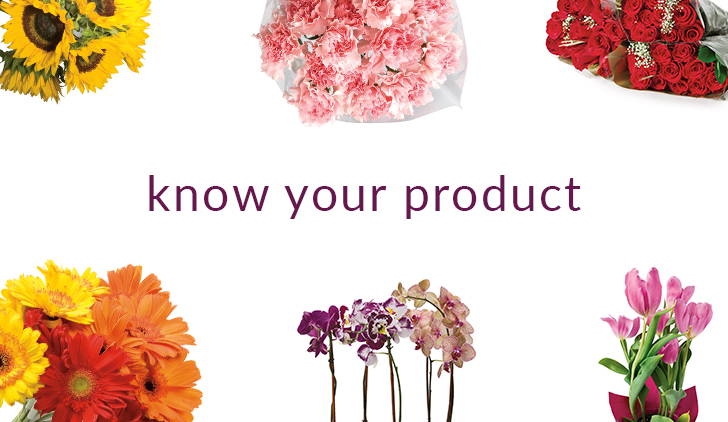
As February rolls around, love is in the air, with red hearts and images of Cupid all around us. While this month has long been celebrated as a month of love, the true origins of Valentine’s Day are a little more uncertain.
One theory claims Emperor Claudius II decided single men made better soldiers than those with wives and families, so he outlawed marriage for young men. St. Valentine, a third-century Roman priest, defied the decree and continued to secretly perform marriages for young couples. Another legend claims Valentine signed a message to his love, “From your Valentine,” which is considered by some to be the first valentine.
Today, the day dedicated to love is celebrated with greeting cards, fancy dinners, sweet desserts and everything in between. There’s no surprise Valentine’s Day is the biggest floral holiday of the year. Did you know people have been giving flowers long before St. Valentine?
In prehistoric times, flowers were shared for their medicinal and herbal attributes. Archeologists have found remnants of flower petals in ancient gravesites. Records also show flowers played a role in Egyptian hieroglyphics, Chinese writings, and Greek and Roman mythology.
Flowers became a romantic symbol in the Middle Ages. Strict religious guidelines prevented couples from public displays of affection, so they turned to flowers, which allowed them to share their feelings without concern of being reported. Couples also hid secret messages in floral arrangements.
During the Victorian era, many books were written to interpret the meanings behind colors and varieties of flowers, and how to arrange them to share the intended message between sender and recipient. Many of these are still being used today.
What’s in a name?
That famous line from Shakespeare’s Romeo and Juliet makes us wonder if a rose by any other name would smell as sweet. But if you’re looking to share your feelings with that special someone this year, which flower should you buy for your valentine? Take a moment to learn the meaning behind the flower so it matches the message you’re trying to convey.
One of the most popular flowers in the world, carnations are available in a variety of colors and are generally symbolic of love and fascination.
Most popular during the summer and fall seasons, the hardy, colorful chrysanthemum references friendship, love and joy.
Distinguished by large blooms and a wide assortment of vibrant colors, gerbera daisies express cheer, beauty and innocence.
It’s hard to miss the tall, eye-catching gladiolus, which symbolizes strength, honor and infatuation.
The big, beautiful blooms and fantastic aromas of hydrangeas represent versatility, probably because they’re popular as cut flowers and potted plants.
If you’re looking for a unique flower with undeniable appeal, consider the exotic orchid to represent rare and delicate beauty.
With a variety of colors, Peruvian lilies, better known as alstroemeria, symbolize friendship and devotion in a striking bouquet.
Possibly the most revered and celebrated flower, roses are the standard symbol for love and appreciation.
As a symbol of honor, aspiration, innocence and purity, stargazer lilies’ star-shaped blooms have a distinctly sweet fragrance.
It’s no surprise sunflowers, with their bright yellow petals, mean warmth and adoration, and are a sign of longevity.
An upcoming, trendy symbol of perfect love, tulips also stand for a sense of grace and elegance.
Colors paint the picture
Whether it’s brightening someone’s day or extending feelings of love, congratulations or condolences, flowers provoke emotional responses. What color should you give to share that sentiment?
Blue — peace, openness, serenity; offers a cooling antidote to anxiousness
Green — health, resilience, good fortune, youth; sends a message of optimism and renewal
Lavender — refinement, grace, elegance; embodies feminine beauty
Pink — grace, gentility, happiness; conveys youth, innocence and joy
Purple — royalty, dignity, pride, success; represents accomplishment and admiration
Red — desire, strength, passionate love; symbolizes beauty, courage and heat
White — innocence, humility, reverence; evokes simple beauty, modesty and elegance
Yellow — happiness, joy, lightheartedness; a symbol of friendship and new beginnings
Petals for Publix
Our customers tend to think of Valentine’s Day as a holiday steeped in tradition. It’s no surprise the Publix Premium Dozen Red Roses is our best-selling bouquet, and our simple vase arrangements and single-stem roses are popular, too. Balloon sales also continue to increase.
If you’re looking to forgo tradition and try the latest trends, pick up a bouquet of tulips. When it comes to gifts, the produce department will offer pre-made baskets full of chocolates, nuts and other goodies. And candy bouquets are returning for a second year, so you can combine traditions by giving chocolate in a trendy arrangement.
Sources: history.com, proflowers.com, teleflora.com, everyday-wisdom.com
Online Exclusive
Make this Valentine’s Day memorable by trying an Aprons recipe or grabbing some items on the go from your local Publix.


